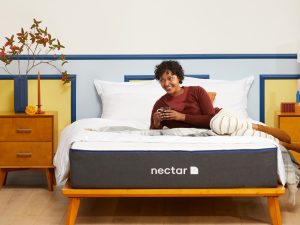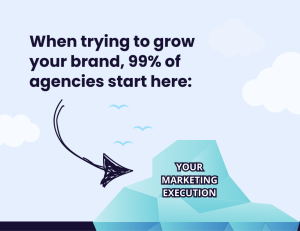Snapshot:
We were engaged by Nectar Sleep (Resident Home) to run the growth function to take the business from the then $10M annual revenue to become a global market leader. During our time, the business scaled to $300M+ revenue, launched multiple brands, and expanded globally. This growth rate secured Nectar Sleep the #1 position on the coveted IR5000; as the fastest-growing consumer brand in the USA.
This growth phase of Nectar Sleep was one we knew well. The mega top line was a new record for us (driven by the high $700+ AOV), yet the % growth rate was right in our zone; building predictable growth machines for brands that had product market fit, ready to take off.
There is always a “good timing” element with wins this big. Yet in the case of the mattress space, there were over 100 competitors fighting for the same spot that shared this same timing.
So that leaves execution.
In this write-up, I’ll break down the key drivers so you can take what makes sense and apply it to your business.
As you’ll see from the next 3k-ish words, our approach to growth is big on positioning/offers, the sweet spot level of data, elite talent, and team workflows. We use shiny tools like Ai, but just like how giving a $150k Steinway piano to an amateur won’t make them concert-ready. Ai only becomes a killer in the right hands.
If you’re looking for help to blitz-scale your brand, then you can book an intro call to see if you’d like to work with Growth Shop here
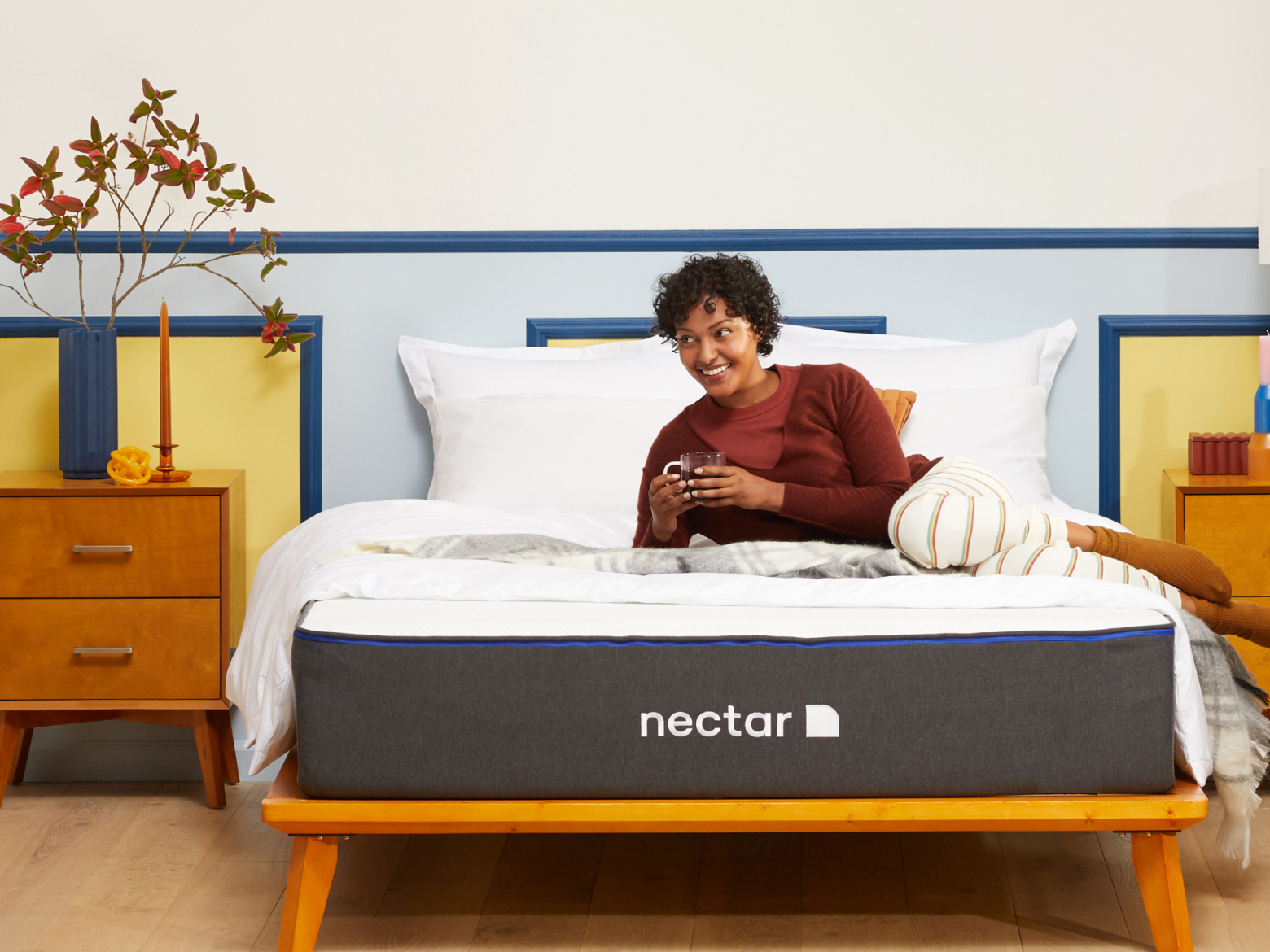
What we’re going to cover:
What ACTUALLY drives impact:
1. The Offer
Nectar had a beautifully simplistic offer angle: a better mattress for a better price.
The core competitive target was to annihilate Casper (who had raised $380M) and Purple (a company that I have a great deal of admiration for).
Yet there were also another 98 competitors pushing a relatively similar product. So we had to get creative to cut through the stank.
Of the big guys, we each had a slightly different channel angle:
- Nectar was Meta
- Purple was YouTube
- Casper was Brand/Offline
It didn’t take long for us to start crossing into each other’s channel territory, so we needed the winning offer to continue
gobbling up the market.
Offers have a few components:
- The product: the unique problem you’re solving
- The price: what customers need to pay to solve the problem
- The risk removal: the confidence you give them that you can do what you say
Company | Product | Price | Risk Removal | Warranty |
|---|---|---|---|---|
Nectar Sleep | Comparable | $750 | 365 Night Trial | Forever |
Casper | Comparable | $1k+ | 100 Night Trial | 10 Years |
Purple | Comparable | $1k+ | 100 Night Trial | 10 Years |
The point here is that Nectar’s physical product was great and “did the job as promised”, but wasn’t the prime focus of differentiation.
The real positioning and offer win was Price and Risk Removal.
Both Casper and Purple had 100 Night Free Trials vs Nectar at 365 Nights. They both had 10-year warranties, Nectar had a lifetime warranty.
So the real offer became:
- A comparable mattress
- A better price
- Higher confidence
The weight of the Risk Removal was so critical in this case as changing a mattress is such as pain in the a*s. Most people ditch their old mattress when the one arrives, so the Nectar bet was that someone that doesn’t like the mattress will likely return it in the first weeks or months. So the 365 nights then became primarily a positioning tool to illustrate we had the most confidence in our product.

Casper and Purple already had funding, which limited their ability to make big
bets like 365 nights vs 100 nights. Nectar was far more agile. Then the smaller
players were far too conservative and fearful they’d get scammed.
So the offer was a big tick. The conversion lift from the 365 nights far outweighed
any increase in returns from the extra 265 nights. Big win.
Let’s pause for a second: I very much intentionally started with The Offer section,
not the buzzy bits like attribution, as getting your offer right is BY FAR the most
transformational area of focus. Period.
How do you know if you’re on track?
The most basic litmus test is the back of a napkin validation:
You need to be able to clearly communicate with no more space than the back
of a napkin how you do a better job at solving your customer’s problem than
anyone else across Product, Price & Risk Removal.
This also doesn’t mean cheaper is better, far from it. Sometimes the high price is
what creates the positioning. Think $750 T-shirts.
Write your offer on a napkin without your brand, then two other competitors. Get
people to choose the winner. You’ll start getting a sense with who’s strongest AND
whether people about care about what you think is most important.
This offer analysis is the first phase we take any brand we work with through.
Nothing is more powerful.
You can learn more about constructing an offer HERE
2. Your Hook
So this is where we came in. I was almost suspicious when I first talked to the guys. The website still had sh*tty stock imagery, didn’t look like a profitable business. But then I saw the numbers. There was definitely something cooking here.
So we had a superb offer to work with. The next phase is wrapping this offer into a hook that we could blitz amplify.
Just like with the offer, the most simple approach is often the best: qualitative research. More often than not, brands will
build a hook based on what they think their customers want to hear vs what their customers are already telling them they
actually care about.
The product already had a few thousand reviews, so we had something to work with. ChatGPT didn’t exist then and even
now – you should always execute this process manually.
You’re hunting for three main insight slices here:
- Why did they choose us
- Why are happy people satisfied
- Why are unhappy people not satisfied
The Process
- Export your reviews by platform (your site, TrustPilot, Amazon, and any others)
- Start manually hunting from themes, I just type ideas in a cell next to each review, then clean them up as I go along (e.g. product quality, service, price etc)
- As you go along, copy great snippets from the reviews with the reviewer’s name for use later in ads, email etc
- After about 50-100 reviews align on what your categorization themes are (max 10 typically)
- Get someone in the team to go through the rest, 500+ (if you have that many)
- Hire a web scraper to pull the same from your competitors
- Do the same process with 50-100 of your competitors
- Get someone in your team to help with the rest
We spent about $10k building a machine learning semantic analysis tool to do this at scale, but it didn’t beat out humans
doing it for 500 or so. There is SO MUCH powerful nuance and detail in there that can change with even the slightest
variance in tone. It’s also an excellent exercise for the team to get their head into who the customer is and what they want.
So once you have all of that sorted, you simply compare why you are winning AND where your competitor’s weak spots are.
From this research, a number of personas also emerged:
- Life changes: divorce, moved in, moved out
- Pain Relievers: primarily bad back problems due to other sh*tty mattresses
- Upgraders: no pain, no big change (just a trigger-happy cohort that wanted a change)
So we took all of our research and distilled it down into a beautifully simple hook:
“OUR PROMISE: The Best Sleep of Your Life
At Nectar, we are so confident that you’ll have the best sleep of your life, that we’re offering you a 365 night trial to find out – 100% risk free.
We’re the only company confident enough to offer this for a reason!”
What a brilliant d*ck move! “The only company confident enough to offer this for a reason”. There is so much psychology
in such a simple line. The big win wasn’t about us being confident enough to try 365 nights, it was that our competitors
were only confident enough to offer 100 nights. What was going to happen on night 101? The mind boggles.
This was one of the first triggers that exploded the ad accounts growth from $900k a month to $8M+.
3. Your Ads
When we were first scaling, UGC wasn’t yet a thing. We didn’t have the “shop for
creators” platforms, so we worked heavily with our affiliates (more on this in the
next section) and we also hit up our customers (with limited success). You really
appreciate the talent of creators after you see what non-creators create 🙂-
you’re doing God’s work.
We were also very early to going big on Broad Audiences. We found that with a
deeply researched hook, and the right creative asset pairing, the Meta machine
made Broad work. To this day, where Broad struggles is with a weak hook and
weak creative, as the platform user engagement (clicks, views, then conversion)
is too soft or slow to feed the pixel what it needs.
Our main audience was called GBA (I’m Australian, and had moved north of the
equator for bigger markets and knew I was never going back), so this stood for
God Bless America 🦅
For our $10M – $300M phase, we could put through $2M+ spend a month on a
single ad (contrary to what you may read, we often still find winning ads that can
drive 30%+ of ad spend for months).
Whitelisting
This was also major for us and required a bunch of workarounds before the
simple method available now. At times we had 50% of our spend going through
multiple whitelisting style pages. We found wins in both announcing the brand for
the top of funnel and also closing the deal for mid-funnel/bottom style traffic.
Also, notice how brief this “Your Ads” section is when you’ve front-loaded all the
research!

Your Conversion Machine
To make sense of the conversion machine, we need to split things out further in a way that most don’t:
- Onsite Conversion: simply, what you control within your own ecosystem (website, email/SMS flows)
- Offsite Conversion: what people will see and discover when they leave after either not buying OR to research you further
4. Onsite Conversion
As the Nectar offer was so strong, we didn’t need a great deal of testing there. So we accelerated on bread and butter rapid
deployment conversion rate optimization work.
We took advantage of separate landing page tools on subdomains to ensure we could swiftly deploy experiments without
needing core dev resources AND without risking breaking something on the main site.
There are a few main killers when it comes to Conversion Rate Optimization (CRO):
- Design & Development bottlenecks
- A lack of integration between Product and Marketing Teams, e.g. when a Product Team ships something without considering the impact on marketing
Having separate funnel flows specific to paid resolved this, as well as building templates in landing page tools so that
we/marketing folks, could hack away and make basic changes very, very quickly.
Split tests are also a beautiful tool to drive excitement and alignment between teams. You’ll see profound executional
velocity results if you slash meeting times and discussions about what people think MAY happen, to instead rapidly deploy
split tests so the data can do the talking.
Ideation
Our ideas came from a few places:
- Continuity from top-performing ads. E.g. testing a winning message on ad creative, to then ship the winning message through funnel flows.
- Continued qualitative research: TALK TO YOUR F’IN CUSTOMERS! And even more importantly, run email sequences where you offer to pay people who didn’t buy within your typical window to find out why.
- Build a feedback loop with the customer service team. Offer a monthly cash prize to the top 1-3 findings from customer service agents. This team holds the gold. You’ll get far more value from setting up a flow with CS than paying $100k to a research agency.
- Track the companies from cut-throat industries, crucially, those companies that are NOT your direct competitors. And look for companies that are NOT VC funded. VC-funded consumer brands are definitely less trigger-happy than prior to 2023, but you want self-funded or PE-backed companies, they are more efficient with their execution.
- Follow Info Product style Internet Marketing (think Russell Brunson, Todd Brown, etc). We spent more time going to conferences like Marketing Funnel Automation Live than high-fiving big media conferences.
Speed
The dev team was great and ensured the site was super fast. Please, please, please just get your speed sorted before you
do anything else. Nothing else matters if you have a janky and clunky experience.
Marketing Automation
This was largely not an LTV product – so efforts here were all about driving a hard-hitting first time conversion. So
sequences were hard-hitting on automation YET also had to have a highly elongated welcome series that focused on
education due to a mattress often not being a same day purchase.
5. Offsite Conversion
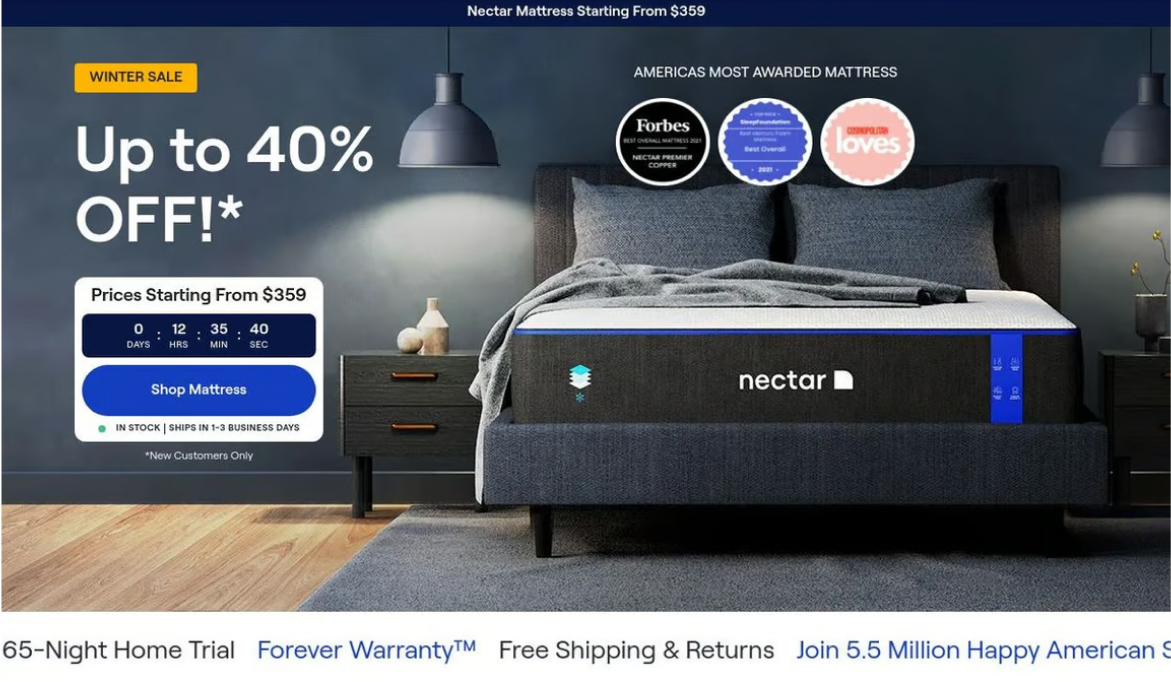
This area is by far one of the most important yet least talked about.
With typical conversion rates sitting around 3%-5% (that doesn’t mean that 95%+ of people aren’t interested in buying) it may be a function of timing – “yes, but not yet”.
In our case, we’re talking about a mattress. Not a smalldecision.
So the “what happens” in the consideration phase was critical.
We went hard on retargeting. We tested multiple different out-of-the-box platforms, like the mystery box that is Criteo (that had dubiously good deliverability yet a questionable cost structure and next to zero control), then AdRoll which had far more control, SteelHouse that had great creative and also internally managed through platforms like TradeDesk.
Retargeting played a key role, yet in the mattress space, nothing compared to…
Affiliates
(Trigger warning: if you’re too early in your journey to tap into an affiliate program yet or you work in a vertical that can’t, you may want to jump down to the Data & Attribution section)
As the ticket price of a mattress is SO high, $750+, the DTC mattress boom created an affiliate gold rush. Caspers projectile-vomit-media-spend literally created the industry
and educated the nation, which meant that people started naturally searching for terms like “best memory foam mattress”.
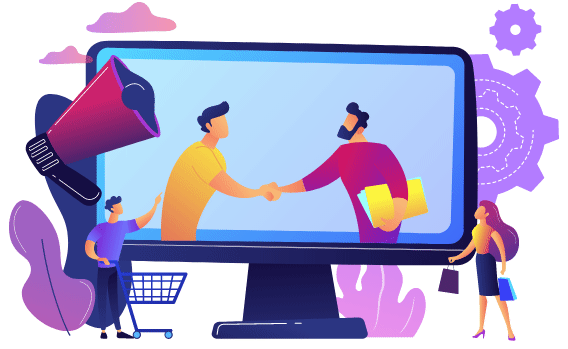
All the big mattress guys, us, Purple, Casper etc needed to scale far faster than SEO would allow so we were paid junkies. The affiliates knew they couldn’t compete with us one paid BUT they could with SEO.
So the top organic listings became littered with extensive affiliate reviews. And these guys were doing a GREAT JOB. The payouts were so sizable that they could afford to build out complete studios, have full-time staff – the whole nine yards.
So then consider what happens with the user journey:
- Casper blows brand dollars on buying every billboard in NYC
- People head to their website
- They are convinced that they need a memory foam mattress
- They then naturally Google “best memory foam mattress reviews”
- They forget about Casper and take notice of the brands with the best reviews
Guess who has the strongest offer…
The Nectar offer was legitimately the best. This meant we had the highest conversion rates, which meant the highest payout for affiliates. We got the best rankings, because (you guessed it) we had the best offer.
When you get offsite conversion right, you start mopping up even your competitor’s media dollars.
On so many of the 200+ ecom growth projects we’ve worked on, affiliates are often treated as an afterthought. The channel is given to a junior internal team member. The Nectar philosophy deeply appreciated and understood the power of affiliates, so built the relationships accordingly.
6. Data & Attribution
We were initially scaling in a really interesting phase ahead of all of the iOS 14 updates that decimated attribution. In this period, there was a market obsession with cracking end-to-end attribution, across channels, across devices.
We had quotes from companies like C4 Metrics for upwards of $800k!
The direction that marketing was heading was clear. More privacy, less data.
So instead of allocating our strategic and capital resources at this phase to “cracking attribution”, we used the Growth Shop lean approach to use blended metrics built up from the foundations of contribution margin.
“What’s our total media spend, what’s our total gross, and therefore net position?”
You then take periods in time where performance is great, reference what the platform data says e.g. if a Blended ROAS (Revenue / Total Media Spend) is 500%, what’s the budget mix across channels AND efficiency metrics within the platforms (e.g. what’s the Meta ROAS at this level), to then stress test scale; what happens to Blended ROAS over 30 days if we double Meta spend?
This beautifully simple method was, of course, fully automated with far more granular carve-outs to analyze channels, the impact of email blasts on platform data etc BUT at a foundational level, it worked so well.
Instead of trying to crack definitive clickstream data, we focused on improving the metrics that we knew, all things being equal, would trickle down into profitability. E.g. Improving Click Through Rate reduces Cost Per Click, assuming the Conversion Rate is held, will improve ROAS. Improved platform ROAS allows for more scale and improved efficiency – more money-in-the-bank dollars in, fewer out.
The approach works brilliantly.
There most definitely is a time and place to allocate substantial investment into cracking those harder attribution problems, and that’s when smaller gains in efficiency or growth comfortably drive a return on the team and tools cost. When you’re in rapid growth mode, the above approach is the winner.
Affiliates

This was a hard one and critical to answer based on the above approach; if I spend another 20% this week/month, knowing that not everyone will buy on their first visit? When should I expect that return AND how should I think about my Blended ROAS today, if the payback period is in X days?
Meta had an advanced analytic tool back then called Atlas. At this time, “Facebook” claimed to have attribution coverage of 97.50% of devices. If someone could answer
these questions, it was these guys.
The problem: Meta reported that 80% of customers purchased within 48 hours. GA360/Google Analytics (the other main contender for cross-device) stated that 80% of customers purchased within 24 HOURS!
This definitely seemed off. We knew from our rate of scale that spend and revenue didn’t correlate this closely.
We went heavy on qualitative – yet again, just asked people. Over 1,000 survey responses found an average of 21 days.
This told us:
- We can’t trust even the best potential platforms on the planet
- We need to model for a much wider decay. This number proved to be far closer to what we could expect.
The other approach that was useful, that we use often now, is to look at timestamps of when emails are collected from pre-purchase popups/cart abandons, to then analyze the days until a purchase is made. This data set will include a mix of first time visitors, and those more mid-funnel, so taking that account, you’ll know your true “first visit average” is often 50%+ more.
7. Summary and What You Can Do NOW
By taking the steps mentioned above, we helped build an ecommerce brand from less than $1m per month turnover to a $1bn exit.
It may sound lofty AF, but whichever phase of your growth journey you’re in, there are clear steps you can take that will categorically put you in better shape for a push to the growth summit.
Go away right now and interrogate:
- Your Offer
- Your Hook
- Your Ads
- Your Site
- Your Customers
- You Network
Once you gain a deep understanding and awareness of where all of these pieces are right now vs. where you want/need them to be – that’s when you’re ready to make the important decisions that add zeros to your bottom line.
Ready to level up your ecom brand and pull yourself out of the growth rut? Then book a call below so we can tell you more about your business in one call than you will have learned in the entire lifetime of your company – plus a FREE growth audit to anyone who books an intro call with us. Book a call and start supercharging your ecom growth with a billion-dollar Growth Shop growth plan.

